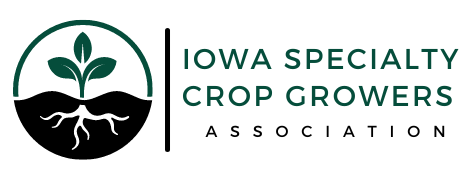Ruth Litchfield
Food Science and Human Nutrition
515-294-9484
litch@iastate.edu
Sarah Francis
Food Science and Human Nutrition
515-294-1456
slfranci@iastate.edu
Cynthia Haynes
Associate Professor in Horticulture
515-294-4006
chaynes@iastate.edu
As Iowans celebrate National Pollinator Week they can also celebrate the many diverse products made possible by bees, butterflies and other pollinators. One of the most recognized products of honey bees is honey.
Honey is commonly referred to as a “natural” sugar. Does this make it better than other sweeteners? Is it healthier? More nutritious?
In this week’s quickinar video series, specialists with Iowa State University Extension and Outreach discuss pollinators and honey.
Studies show that Americans are consuming too many added sugars. Added sugars are sugars and syrups added to foods during processing or preparation. It does not matter whether this sugar is table sugar, honey or corn syrup. The point is that it is added to a food.
Added sugars make up 13% of the daily calories consumed by Americans. The United States Dietary Guidelines for Americans recommend no more than 10% of total calories come from added sugars. Nearly half of these added sugars come from beverages like soft drinks, fruit drinks, sweetened coffee and tea, energy drinks, alcoholic beverages and flavored waters.
Honey is made up of the same building blocks as table sugar, glucose and fructose. In table sugar, the glucose and fructose are hooked together. In honey, the fructose and glucose remain separate. Due to this difference, honey has slightly more fructose than glucose, which imparts a sweeter flavor. Honey is a bit denser than table sugar. There are 63 calories per tablespoon of honey compared to 48 calories per tablespoon of table sugar. However, since honey is a bit sweeter you may use less of it. Further, fructose is absorbed a bit slower than glucose, which may help control blood sugar levels.
Honey does have some benefits not found in table sugar. Honey includes very small amounts of minerals like potassium, calcium, phosphorous, magnesium, iron and copper. It also includes small vitamins such as Vitamin B6, riboflavin and folate. Honey is commonly pasteurized to remove impurities and kill any potentially harmful bacteria. The high temperatures of pasteurization will likely decrease the amount of the vitamins and minerals in the honey.
Finally, honey also appears to have some anti-oxidant and anti-inflammatory properties. In fact, some suggest consuming raw honey decreases the effects of seasonal allergies due to the trace amounts of pollen.
For those interested in learning more about gardening, contact your ISU Extension and Outreach county office for information about the Master Gardener program. Training begins across the state this fall.
ISU Extension and Outreach will be hosting weekly Sow, Grow, Eat and Keepquickinars. These quickinars will be 5-15 minute online lessons of seasonally appropriate topics for the garden, food preparation and food preservation.
Some of the upcoming topics include:
- Berries
- Herbs
- Sweet corn
- Tomatoes
- Produce food safety
- Canning produce
For additional resources and publications referred to in this news release visit the Sow, Grow, Eat and Keep website. Send your food or garden questions to sowgroweatkeep@iastate.edu.
